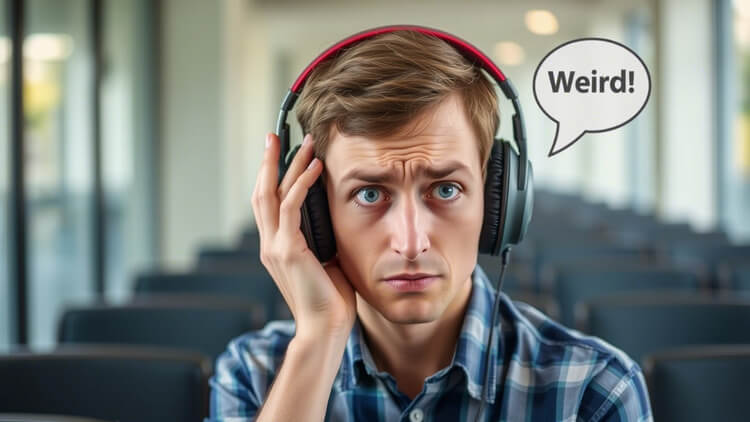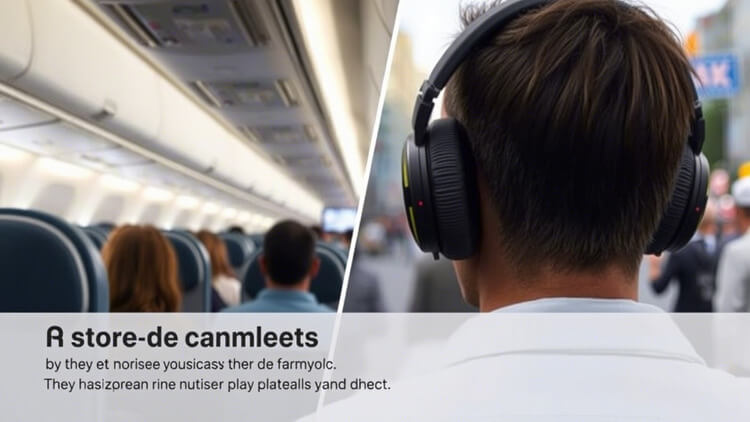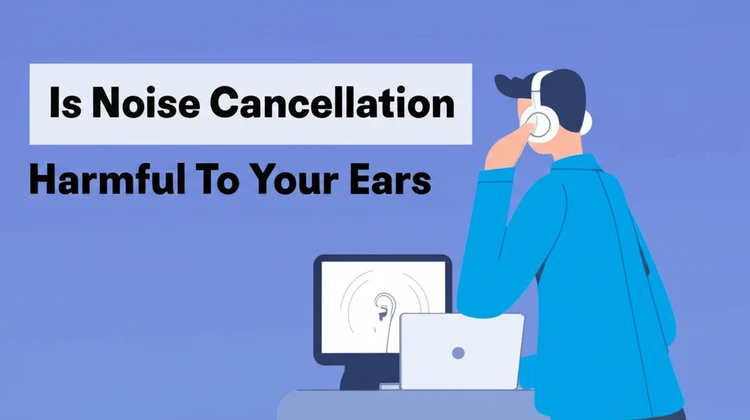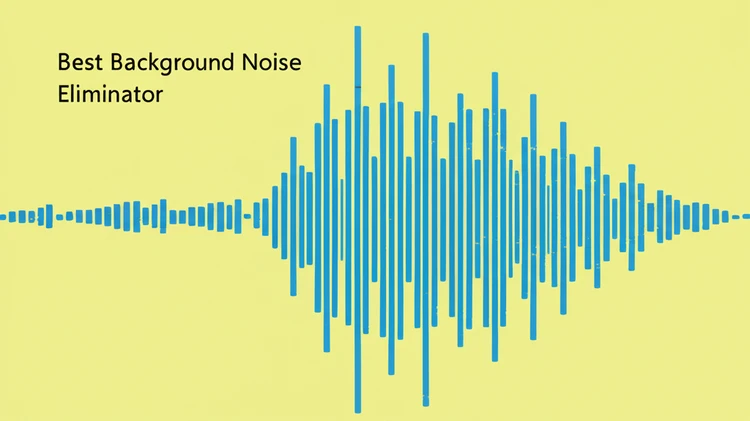
Many people wonder, “Why does noise cancelling feel like pressure?” While noise-cancelling headphones are a godsend for blocking out distractions, some users experience a peculiar sensation of pressure. This article delves into the science behind this phenomenon, exploring how Active Noise Cancellation (ANC) technology works, why it can cause this pressure feeling, and how you can minimize discomfort while still enjoying the benefits of a quieter world.
How Noise Cancelling Works
Noise-cancelling headphones primarily employ two methods to reduce unwanted sounds: Active Noise Cancellation (ANC) and Passive Noise Cancellation (PNC). While both aim to create a quieter listening experience, they achieve this through different mechanisms.
Active Noise Cancellation (ANC)
ANC utilizes sophisticated technology to counteract incoming noise.
It’s this active manipulation of sound waves that can lead to the sensation of pressure.
- Detecting Noise: Small microphones embedded in the headphones capture ambient sounds, particularly consistent low-frequency noises like the hum of an airplane engine or the drone of an air conditioning unit.
- Generating Inverse Waves: Based on the detected noise, the headphones’ internal circuitry generates “anti-noise” – sound waves that are the exact inverse (180 degrees out of phase) of the incoming sound waves.
- Canceling the Noise: These inverse waves are then emitted into the ear canal, where they collide with the incoming noise. This destructive interference effectively cancels out the perceived noise.
This precise manipulation of sound waves, while effective, can sometimes create a peculiar sensation of pressure or fullness in the ears.
Scientific Explanation
The sensation of pressure isn’t due to a physical change in air pressure within the ear canal. Rather, it stems from how the brain interprets the absence of certain low-frequency sounds.
Research indicates that the brain, accustomed to a constant barrage of low-frequency ambient sounds, interprets their sudden absence as a change in the auditory environment. This can lead to a sensation similar to the feeling of pressure experienced during changes in altitude, although the underlying mechanism is different. This effect is further amplified by the occlusion effect, the enhanced perception of low-frequency sounds generated by the body (like chewing or breathing) when the ear canal is sealed.
Passive Noise Cancellation (PNC)
Unlike ANC, PNC relies on physical barriers to block sound.
This includes materials like dense foam padding, well-sealed earcups, and insulated linings within the headphones. Because PNC doesn’t involve the manipulation of sound waves, it doesn’t create the same pressure sensation associated with ANC.
Why Does Noise Cancelling Feel Like Pressure?
The feeling of pressure, often described as fullness or a slight blockage, is a common experience for some users of ANC headphones. This sensation is a consequence of how the brain processes the altered soundscape created by ANC.
Perceived Pressure Changes
ANC significantly reduces external low-frequency noise, creating an unusually quiet environment.
Our brains constantly monitor ambient sound levels. The sudden reduction in these low frequencies can be interpreted as a change in environmental pressure, even though no physical pressure change has occurred.
Biological Sensitivity
Sensitivity to the pressure sensation varies widely among individuals. Factors influencing this sensitivity include:
- Previous ANC experience: First-time users often report a more pronounced sensation.
- Individual anatomy and physiology: Differences in ear canal shape and sensitivity of the auditory system play a role.
- Brain adaptation: For many, the sensation diminishes over time as the brain acclimates to the altered soundscape.
Headphone Design Factors
The design of the headphones themselves can also influence the pressure sensation:
- Tight earcup seals: While crucial for effective noise cancellation, a very tight seal can exacerbate the pressure feeling and contribute to the occlusion effect.
- Ventilation: Headphones with good ventilation can help alleviate the sensation of pressure by allowing some airflow.
- ANC implementation: Different ANC technologies (feedforward, feedback, and hybrid) have varying impacts on pressure perception.
Generally, feedback ANC, while more effective at noise reduction, can lead to a more pronounced pressure sensation compared to feedforward ANC. Hybrid ANC, which combines both methods, strives to balance effectiveness with comfort.
Scenarios Where Pressure Sensation Is Common
The pressure sensation can be more noticeable in specific situations:
- Long-Duration Use: Extended periods of using ANC headphones can increase awareness of the sensation.
- High ANC Settings: Higher ANC settings result in more aggressive noise cancellation, which can amplify the pressure feeling.
- Extremely Quiet Environments: In very quiet environments, the contrast between the usual ambient sound and the ANC-induced quiet can make the pressure more noticeable.
Tips to Minimize Pressure Sensation
- Adjust ANC Levels: Start with a lower ANC setting and gradually increase it to allow your ears to adjust.
- Take Breaks: Periodically remove your headphones to allow your ears to “reset.”
- Choose the Right Headphones: Look for models with adjustable ANC levels or hybrid ANC.
- Ensure a Proper Fit: A secure yet comfortable fit is essential for minimizing both physical and auditory discomfort. Experiment with different ear tip sizes if applicable.
Benefits of Noise Cancelling Despite the Pressure Sensation
Despite the potential for pressure, the benefits of noise cancelling can be substantial:
- Improved Focus: By reducing distractions, ANC headphones can significantly improve concentration and productivity.
- Enhanced Relaxation: A quieter environment promotes relaxation and stress reduction, which can be particularly beneficial for managing the pressure sensation itself.
- Immersive Audio Experience: Even at lower ANC settings, the reduction in background noise can enhance the clarity and detail of your listening experience.
FAQ: Common Questions About Noise Cancelling Pressure Sensation
Can noise-cancelling headphones cause ear pain or hearing issues?
The pressure sensation associated with ANC is not physically harmful and does not cause ear pain or damage hearing.
It is a perceptual phenomenon related to how the brain interprets the altered soundscape.
How do I stop noise-cancelling headphones from feeling uncomfortable?
Experiment with adjusting the ANC level, taking breaks, and ensuring a proper fit. If the sensation persists, consider trying a different model of headphones.
Why do some people feel discomfort with ANC while others don’t?
Individual sensitivity to the pressure sensation varies due to differences in auditory processing, ear anatomy, previous exposure to ANC, and the specific design of the headphones.
Conclusion
The sensation of pressure when using noise-cancelling headphones is a common and harmless side effect of ANC technology. While the sensation can be initially unsettling, understanding the science behind it – the brain’s interpretation of reduced low-frequency noise – can help alleviate concerns.
By following the tips outlined in this article, such as adjusting ANC levels and taking breaks, users can minimize discomfort and fully enjoy the benefits of a quieter, more focused environment. If the feeling persists, explore different headphone models with features like adjustable ANC and comfortable earcup designs to find the best fit for your individual needs.






